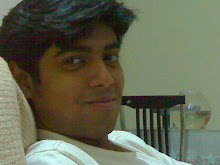The passive activist
Published in the Hindustan Times Edit Page on December 28, 2004
There are men and there are Men. My friend Jyotirmoy Mondol most certainly falls under the latter category. Mondol, a non-descript, 40-something bank clerk, stays in Kolkata’s down-market Kasba area and has a weakness for rum and Atul Prasad songs. Separated from wife and daughter, he lives alone in a one-room rented accommodation and has hardly any visitors. Those who get to meet him regularly----mostly neighbours and colleagues---say he is stingy, arrogant and unsociable.
So what makes him special? Well, Mondol is an activist. Not your regular khadi-endorsing jholawala though. He has spent the better part of his last 10 years----taking leave (often unpaid) from office---to work for the uplife of the Orao community of Purulia, home to habitual offenders, crow-eaters and other denotified tribes.
But ask Mondol about it and he will recoil. Press him some more and he will get offended. “Activism has become a dirty word. A rather lucrative career proposition now,” he once told me. “I go to Purulia for very selfish reasons. It’s a sort of detoxification drive for me.”
But I know that Mondol’s visits have been more than that. He had once saved an Orao woman from being branded a witch. The plot was a predictable one. A year after marriage, Surajmani Mandi’s husband had died an untimely death. Greedy relatives, wanting to usurp her property, had hired the services of an ojha (exorcist).
Mandi was promptly branded a witch and asked to leave the village. Mondol was there when all this was happening. Realising that there was no time to start any movement, he had bribed the village headman. Mandi’s problems were solved, at least for the time being. “But what did you gain from it,” I had asked. “I kind of fancied the woman, you know,” Mondol had winked.
There are other Mondol stories. Bigger achievements that should have earned him some recognition had Mondol been somewhat less self-abnegating. When we first became friends, I thought Mondol was a Tarinikhuro replicate (Tarinikhuro is that great teller of tales created by Satyajit Ray.)
I didn’t know whether to believe him. But then Mondol did something which, much against his wish, got him a single column space in the inside page of a Kolkata daily. He started a school for Purulia’s tribal children.
I called up Mondol a few days back. “What’s the plan for New Year Eve?” He sounded excited. “The school’s doing well. They are staging a play, all by themselves. What better way to spend the New Year than being there?”
Hundreds of kilometers away from that ‘great event’, this 31st night, in some south Delhi pub, I’ll drink to that.

